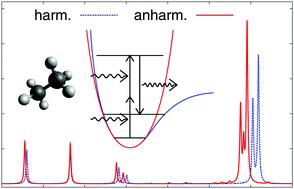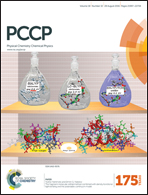Complete analytic anharmonic hyper-Raman scattering spectra
Abstract
We present the first computational treatment of the complete second-order vibrational perturbation theory applied to hyper-Raman scattering spectroscopy. The required molecular properties are calculated in a fully analytic manner using a recently developed program [Ringholm, Jonsson and Ruud, J. Comp. Chem., 2014, 35, 622] that utilizes recursive routines. For some of the properties, these calculations are the first analytic calculations of their kind at their respective levels of theory. We apply this approach to the calculation of the hyper-Raman spectra of methane, ethane and ethylene and compare these to available experimental data. We show that the anharmonic corrections have a larger effect on the vibrational frequencies than on the spectral intensities, but that the inclusion of combination and overtone bands in the anharmonic treatment can improve the agreement with the experimental data, although the quality of available experimental data limits a detailed comparison.


 Please wait while we load your content...
Please wait while we load your content...